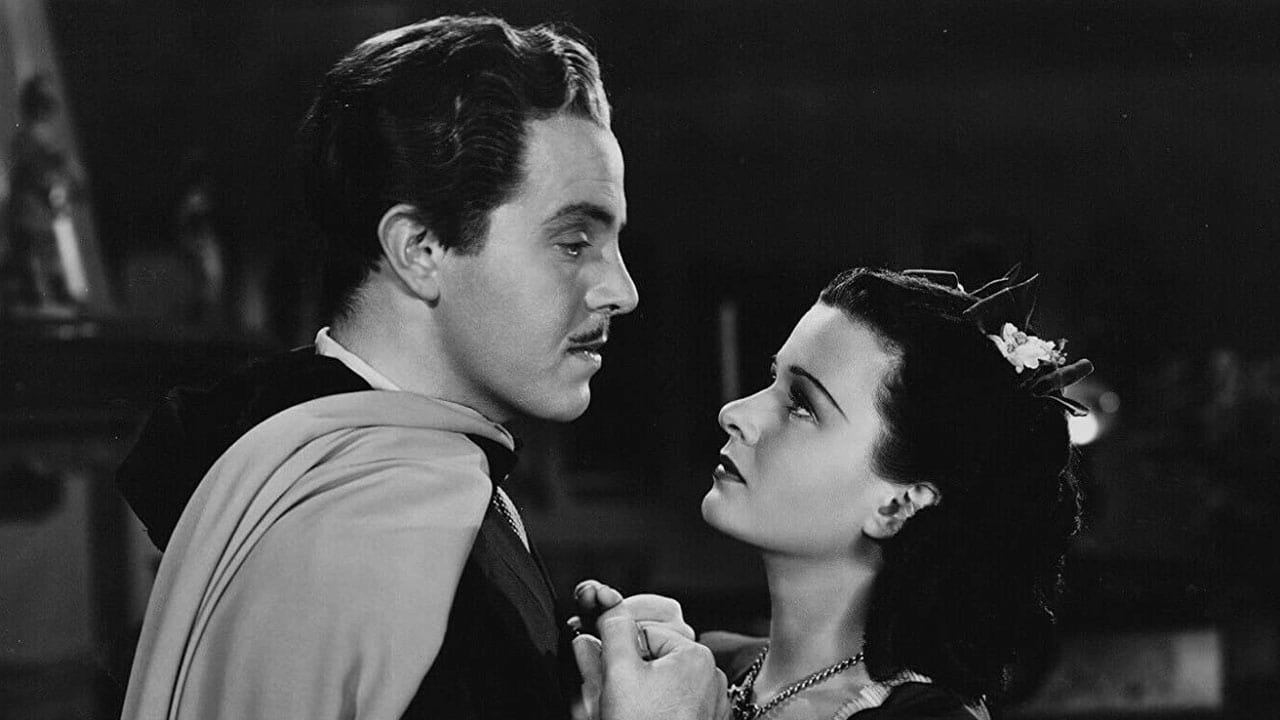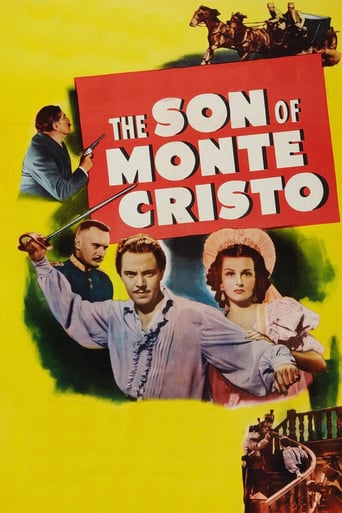



This movie is the proof that the world is becoming a sick and dumb place
View MoreThe performances transcend the film's tropes, grounding it in characters that feel more complete than this subgenre often produces.
View MoreThe story, direction, characters, and writing/dialogue is akin to taking a tranquilizer shot to the neck, but everything else was so well done.
View MoreThe film never slows down or bores, plunging from one harrowing sequence to the next.
View MoreIn response to webbarton's astute observation above and query regarding this film--I saw it last night on TCM's on demand service after not seeing it for about 50 or 60 years. The analogy to WWII which you point out did not appear to me until the scene where Gurko Lanen finds the printing press. He orders all the windows in the store smashed. I immediately thought of Kristallnacht. This was obviously intended as there was no reason at all to smash all the windows. Lichtenberg also appears to be Serbia which was always a strong Russian ally and in the film there's an Orthodox wedding. Serbia's also Orthodox. Who would guess this film could be so deep?
View MoreThey made some outstanding unpretentious swashbucklers in those days, rarely equaled since. -- "The Mark of Zorro," "The Adventures of Robin Hood," among others. They carried no message, just that good was better than evil, and that the audience should enjoy the arousal jag while watching the former humiliate and defeat the latter. They had the directors and actors to pull it all off too. And they had the chutzpah to invent whole kingdoms like Ruritania and, as here, Lichtenburg.Eighteen sixty-five. Poor Lichetenburg. The jewel of the Balkans, rich in tradition, as the prologue tells us. It's ruled by the admirable Joan Bennet, more popular with her fans than Lady GaGa is with hers. Alas, there is a festering authoritarian sore just under the benign monarchy. The filthy General George Sanders, who's been given the haircut of a World War I aviator, the direction to unloose his sneer whenever he likes, and is given the name of Gurko Lanen. Now, think about it. Could anyone named Gurko Lanen ever have a kind thought? You bet he couldn't. Oh, how Sanders would love to rule Lichtenburg, grind his boot into the necks of the hoi polloi and smash babies' heads against the stone walls. He's the kind of guy who could clear a room without using a gun. He's decked out in a black uniform, riding breeches and boots, reminiscent of Hitler's SS. This is 1940 we're talking about. But his last name conjures up images of the spiritual leader of the Bolshevik revolution. The German-Russian Non-Aggression Pact lasted from 1939 to 1941, so both Nazi Germany and the USSR were seen as enemies of the good guys. The Soviet threat surfaces again later. If there were any doubts they're dispelled by the scene in which Sanders and the Russian representative stand side by side signing what amounts to an agreement of mutual support. Inimical to Sanders' ambitions is the Prime Minister, Montagu Love, loyal representative of the Grand Duchess. Sanders has him put away on a fake charge.At any rate, Louis Hayward, the son of the Count of Monte Cristo, and the richest man in Europe, takes up the cause of the reformers and worms his way into the palace posing as a hoity toity fop. He does numerous good deeds and in this more daring, masked persona he gives himself the name of Zorro -- I mean The Torch. Both Tyrone Power and Errol Flynn were better at this game. Hayward comes across as a nice guy but a little daft. He never takes anything seriously, even while waiting in a dungeon to be hanged. Joan Bennet is pretty without bringing much to the party.But George Sanders is outstanding. He dominates the screen no matter what the role is -- sardonic hero, sardonic brutal villain, or sardonic suave villain. The guy never lets you down. He looks somewhat like the novelist Vladimir Nabokov. They were both born in the same year in the same city, St. Petersburg. I've often wondered whether they were one and the same person. People claim all sorts of false identities. Look at Prince Michael Romanoff the late restaurateur. Look at Sebastian Melmoth. Look at Bernie Schwartz. As far as I know, no one has seen Sanders and Nabokov in the same room together. As far as I'm concerned, Q.E.D.I don't think too many would argue that this is fresh material. The story of the skilled swordsman acting the pouf is from "The Mark of Zorro" and so is the scene in which a snarling soldier rips a treasonous paper from the public wall while surrounded by frightened peasants, and so is the hidden passageway in the basement and the wet footprints on the stone floor that lead to the secret panel in the wall.As for the working out of the plot, I leave it to you to decide whether Hayward escapes from the dungeon, interrupts the marriage of Sanders to Bennet, engages in a climactic sword fight with Sanders, kills him after a suitable wisecrack, and sweeps the Grand Duchess up in his arms at the end.That climactic sword fight is brief because neither actor is particularly graceful and neither knows anything about fencing. You want to see a match that thrills, see "The Mark of Zorro" or "Scaramouche."
View MoreThis swashbuckler is developed in Europe on the epoch of Napoleon III empire .The Balkanes,steeped in the ancient traditions of romance and chivalry, people hold unswerving loyalty to the throne on which now sits the young great Duchess Zona(Joan Bennett)of Lichtenburg(a country similar to the ¨Prisoner of Zenda¨).She rules under the sinister shadow of one despotic tyrant(George Sanders)general Gurko Lamen who tries to take over . The son of Edmond Dantes (Louis Hayward), the famous Count of Montecristo ,simulating to be a foppish count and masked is ¨the Torch¨ helping the Duchess. She flees to find herself with the emperor Napoleon III.The picture is a sequel to ¨The Count of Montecristo (1934)¨ also directed by Rowland V. Lee , though none connection exception of the father and son relationship. In the film there are action,adventures,melodrama,fencing duels, a love story,derring-do and is pretty entertaining and funny. Louis Hayward as masked avenger is very fine , his following films were a series of swashbucklers during fifteen years. Joan Bennett as the attractive duchess is enjoyable and enticing .Both played in 1939,¨The man in the iron mask¨, and again teamed up for this agreeable adventure.George Sanders as always plays a dastardly villain. Besides appear as secondaries actors,Clayton Moore(Lone Ranger),Montagu Love,Henry Brandon,Ralph Bird and Ian Wolfe. Direction by Rowland V. Lee is excellent, is famous in his films the extensive use of low angle shooting by means of a special device to heighten the impact of the scene . The movie was nominated to the best production design for Edward Boyle by its imposing sets though obtain none. The flick will appeal to swashbuckler enthusiastic and adventures cinema fans.
View MoreScreenwriter George Bruce concocted a pastiche with affection in this film, wherein each scene and, indeed, each read line of dialogue is parodic in nature, although the work is so well crafted and edited that it has been accepted as simply an example of a swashbuckling adventure featuring some major studio players, including Louis Hayward and Joan Bennett. The plot involves a contest between Hayward, as the Count of Monte Cristo, and the redoubtable George Sanders as his rival, Gurko Lanen, for the hand of Bennett, who portrays Zona, Grand Duchess of the imaginary Balkan state of Lichtenburg, during the mid-nineteenth century, and ancillary issues involving Lanen's craving for the small state's throne. The three leads give full-bodied performances with straight-forward interpretations appropriate to a pastiche, while Hayward's rapid-fire intonation and expressions create a unique characterization, contrasted nicely with Sanders' satiny villain, all supported well by numerous Hollywood stalwarts, notably Ian Wolfe, Montague Love and Clayton Moore. Direction by Rowland W. Lee perfectly matches the clever Bruce scenario, and the cinematography by George Robinson, production design by John Schulze, set decoration by Edward Boyle (the latter two Academy award winners for their efforts) and the Saturday matinee serial music of Edward Ward are about as pertinent as can be imaginable, while the excellent print enhances a neatly packaged tale of derring-do.
View More